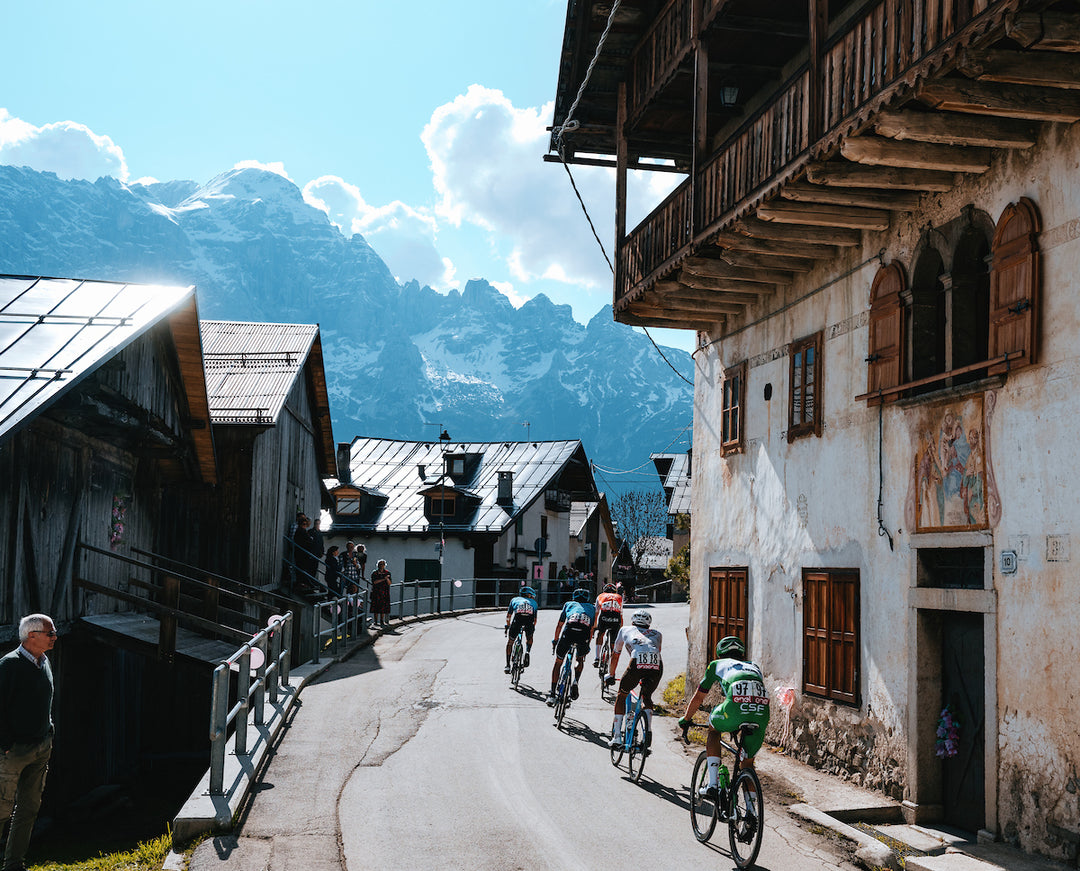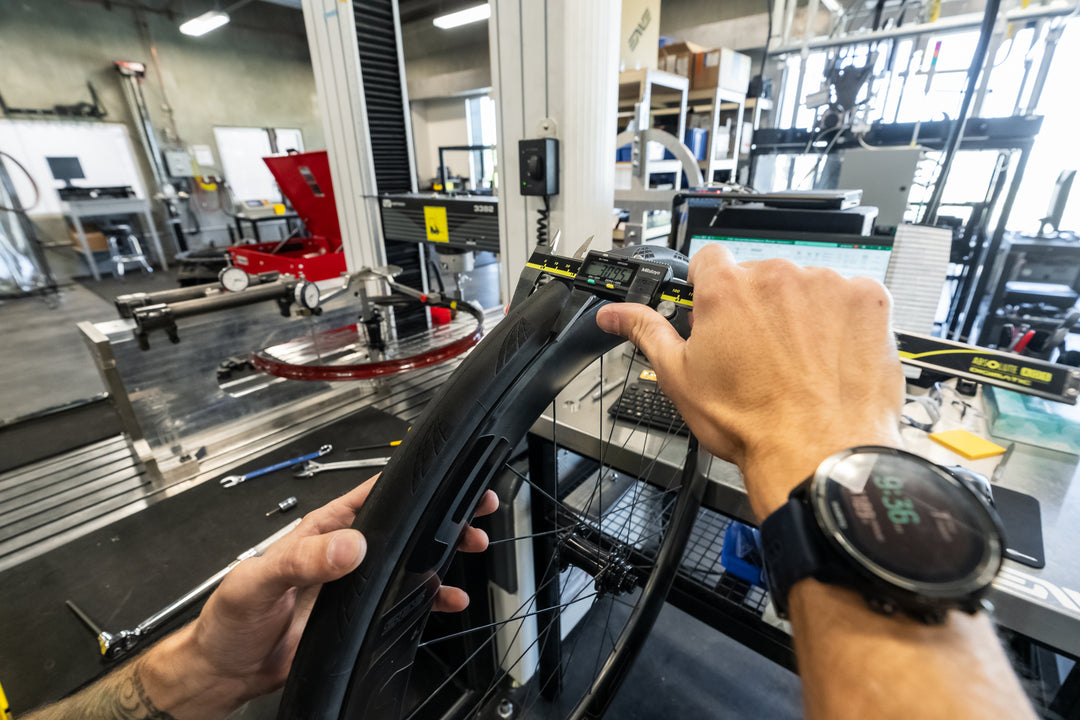BY THE NUMBERS: A TOUR DE FRANCE ANALYSIS
Zach Nehr / Gruber Images
It’s hard to believe that the 2023 Tour de France began almost one month ago in Bilbao. On July 1st, the Grand Depart set off for 182km of racing in the Basque Country, and it was Adam Yates of UAE Team Emirates who won the stage and took the first yellow jersey.
Tadej Pogačar finished 3rd on Stage 1, winning the small group sprint ahead of a group of overall contenders. Yates, Pogačar, and the rest of UAE Team Emirates had the full range of ENVE SES to choose from during the Tour de France.
Pogačar rode ENVE SES 4.5 wheels for almost the entire Tour, a lightweight and aerodynamic wheel that is equally fast on the climbs and in the sprints. On Stage 9 to Puy de Dôme, Pogačar used climbing-specific SES 2.3 wheels to help save weight on the steepest pitches of the final climb.
Three weeks after the Grand Depart in Bilbao, UAE Team Emirates finished the Tour de France with two riders on the GC podium, three stage wins, second in the Team Classification, and the white jersey for the fourth year in a row. Here, we analyze the standout numbers from one of the most exciting Tours in recent memory.



Top 3 Climbing Performances of the Tour de France
The 2023 Tour de France was filled with climbing records from Stage 1 to Stage 20. Almost every summit finish smashed previous climbing times, and some records were broken mid-stage.
There are many different ways to measure climbing performance, but here we’ll use VAM to compare and contrast Pogačar’s best efforts. VAM is an acronym for the Italian phrase ‘velocità ascensionale media’, but colloquially, it has been English-translated to ‘vertical ascent in meters.’ In other words, VAM is an estimate of the number of vertical meters you climb per hour.
You can think of VAM like speed, but vertically. Instead of traveling horizontally at 20 kph or mph, you are climbing at a VAM of 500 vertical meters per hour, for example. VAM is strongly influenced by the length and gradient of a given climb – it’s easier to produce a higher VAM on shorter and steeper climbs, for example.
An exceptional VAM is >1,500 Vm/h on any given climb, while most amateur riders will be around 300-600 Vm/h. World-class VAM is >1,800 Vm/h, especially on longer climbs, in the heat, and up to high altitudes.


Stage 1 – Côte de Pike (2,297 Vm/h)
It didn’t take long to record the first record ascent of the 2023 Tour, as Pogačar, Jonas Vingegaard, and Victor Lafay flew up the Côte de Pike (2.1km at 9.4%) on Stage 1. On the SES 4.5 wheels, Pogačar dropped nearly the entire Tour de France peloton on a 5-minute climb.
According to his Strava file, Pogačar recorded a VAM of 2,297 Vm/h on the Côte de Pike, including two minutes at 2,561 Vm/h on the steepest section of the climb.
Pogačar – Côte de Pike
Time: 5’ 05”
VAM: 2,297 Vm/h

Stage 6 – Cauterets-Cambasque (1,822 Vm/h)
Pogačar’s first stage win came atop the Cauterets-Cambasque, a Category 1 climb with a steep final four kilometers. After following Vingegaard’s mid-stage attack on the Tourmalet, Pogačar threw down a huge counterattack that dropped the Dane on the Cauterets-Cambasque. With one of the best climbing performances of his career, Pogačar took the stage win 24 seconds in front of Vingegaard.
Pogačar – Cauterets-Cambasque
Time: 12’ 43”
VAM: 1,822 Vm/h

Stage 9 – Puy de Dôme (1,966 Vm/h)
If those climbs weren’t enough, Pogačar put in another career performance on the Puy de Dôme at the end of Stage 9. The steep climb around a dormant volcano was the perfect launch pad for Pogačar, who gapped Vingegaard in the final 1.5km of the climb.
This Stage 9 performance is even more impressive because Pogačar had already been climbing for 25 minutes before the start of the steepest section of the Puy de Dôme, and as you can see from his Strava file, they were climbing in hot conditions over 34°C.
For this stage, Pogačar rode the SES 2.3 wheels to maximize his climbing performance on one of the steepest climbs of the Tour de France.
Pogačar – Puy de Dôme
Time: 13’ 22”
VAM: 1,966 Vm/h

Average Speed of the 2023 Tour de France
This year’s Tour de France was nearly the fastest of all time. After three weeks of racing in hot July weather, racing up and down hors categorie passes, and sprinting 70 kph into a tailwind, the 2023 Tour de France had an average speed of 41.43 kph (25.74 mph).
That was the third-fastest Tour de France in history behind last year’s Tour (42.03 kph) and the 2005 Tour (41.65 kph).
Can you guess which stage of the 2023 Tour de France was the fastest? … It was Stage 19, won by Matej Mohorič at an average speed of 49.13 kph (30.53 mph). At that speed, Mohorič completed the 172.8 km (107.4 miles) stage in just 3 hours and 31 minutes.
How Many Riders Finished the 2023 Tour de France?
After 21 stages and close to 3,000 kilometers of racing, 150 riders finished this year’s Tour de France out of 176 starters. The first rider to drop out of the race was Enric Mas, who crashed on Stage 1 and was the only rider who didn’t finish a single stage of this year’s Tour.
The last rider to drop out of the Tour was Victor Lafay, who won Stage 2 with a final-kilometer attack. Unfortunately, the Frenchman crashed on the last descent of the Tour and had to drop out on Stage 20.



Next up for UAE Team Emirates and Tadej Pogačar
There is no doubt that Tadej Pogačar gained millions of fans during this year’s Tour de France. Still only 24 years old, the Slovenian finished 2nd on GC, earned two stage wins, and came away with the white jersey for the fourth and final time.
Pogačar raced with panache and left a trail of brutal honesty in his post-race interviews. Always fighting for UAE Team Emirates, Pogačar thanked his teammates after every single stage and led out the final sprint of the Tour de France onto the Champs-Élysées.
The 2023 Tour de France was an unforgettable edition, filled with the highest of highs and the lowest of lows. It was exactly what you would expect from the most beautiful and brutal bike race in the world.
Soon, Pogačar will be onto his next race and hoping to pull on the rainbow jersey at the world championships in Scotland and continue what has already been a winning season.







